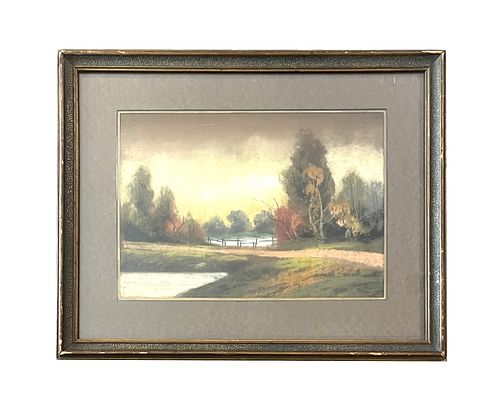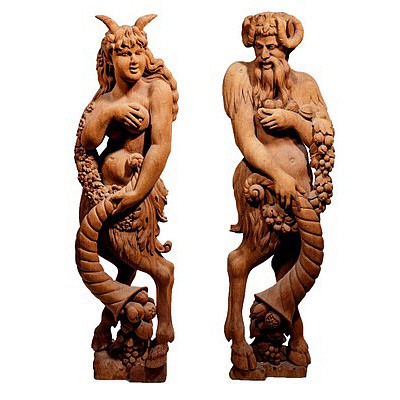Dwight William Tryon (1849 - 1925) American
Lot 16
About Seller
Coral Gables Auction LLC
2377 Coral Way
Coral Gables, FL 33145
United States
We are an auction house with a lot of knowledge of our work environment. We recited at Miami FL. We have professionals with more than 30 years of experience. We work hard to provide our subscribers with the best descriptions of the auctioned pieces and their provenance, in addition to providing good...Read more
Estimate:
$2,000 - $3,000
Absentee vs Live bid
Two ways to bid:
- Leave a max absentee bid and the platform will bid on your behalf up to your maximum bid during the live auction.
- Bid live during the auction and your bids will be submitted real-time to the auctioneer.
Bid Increments
| Price | Bid Increment |
|---|---|
| $0 | $25 |
| $500 | $50 |
| $1,000 | $100 |
| $3,000 | $250 |
| $10,000 | $500 |
| $20,000 | $1,000 |
| $50,000 | $2,500 |
| $100,000 | $5,000 |
| $200,000 | $10,000 |
| $500,000 | $25,000 |
About Auction
By Coral Gables Auction LLC
Sep 25, 2022
Set Reminder
2022-09-25 13:00:00
2022-09-25 13:00:00
America/New_York
Bidsquare
Bidsquare : Fine & Decorative Arts Online Auction #035
https://www.bidsquare.com/auctions/coral-gables-auction-llc/fine-decorative-arts-online-auction-035-10473
This auction has 300 pieces. There is a great variety of paintings and decorative pieces Coral Gables Auction LLC coralgablesauction@yahoo.com
This auction has 300 pieces. There is a great variety of paintings and decorative pieces Coral Gables Auction LLC coralgablesauction@yahoo.com
- Lot Description
Dwight William Tryon (1849 - 1925) American
Pastel on Paper
Measure 9 1/4"in H x 13 1/4"in W and 15 1/2"in H x 19 1/2"in W with frame
Known for: Tonalist landscape, marine, nocturne, educator
Biography: One of America's first Tonalist* painters and much influenced by the Barbizon School* of painting in France, Dwight Tryon was also a long-time art professor at Smith College in Northhampton, Massachusetts, 1885 to 1924. His characteristic canvases were muted, serene landscapes and seascapes that were popular during his lifetime but faded in public appreciation after he died. He applied his own techniques of infused light and atmospheric* effects. His work has been described as relaxing to the eye and lacking the urgent vigor of many of his Impressionist contemporaries. Tryon was born in Hartford, Connecticut and raised in East Hartford. He showed early art talent but remained initially a self-taught artist. His formal education ended at age fourteen when he began working in a firearms factory to help support his widowed mother. e began painting scenes of New England, often along the Connecticut River, while working at a subsequent job in a bookstore. In 1881, Tryon exhibited at the Paris Salon, and that year returned to New York City where he opened a studio on 57th Street and began giving lessons. Almost immediately, he earned the life-long patronage of Charles Lang Freer, art collector and railway-industrial capitalist, for whom Tryon did many paintings including a series of seasonal landscapes for Freer's Detroit home. In 1883, Tryon opened a summer studio in Dartmouth, Massachusetts, a small fishing village near New Bedford, and a few years later he and his wife built a summer home they called the "Cottage". Many of his paintings from that period are twilight and evening scenes in Tonalist Barbizon mode such as The End of Day and Newbury Haystacks in Moonlight. They show that Tryon was aware of the nocturnes of James McNeill Whistler, who also was much influenced by the Barbizon School. In the 1890s, his style changed somewhat, moving from massy, somber tonalities to a lighter coloration. His standard composition became "a patch of meadowland, bounded by groupings of tall, graceful trees with wispy foliage in the middle ground, bathed in the soft, ethereal luminositiy of early spring or fall." (Lowrey 166) He also worked more in pastels than oils feeling that pastel allowed him more creative possibilities in the creation of beauty. Just before his death in 1925, he bequeathed $100,000.00 to the College for an art gallery, which was designed in Georgian style by New York architect Frederick Ackerman. The building stood until 1970, when it was demolished to make room for a Fine Arts complex, something he likely would have applauded.Important Message Regarding Payments : All invoices that exceed the amount of $ 2000 including the buyer premium, must make the payment through check or wire transfer, if we receive the payment through the platform, the money will be reimbursed automatically to your cardCondition
Coral Gables Auction strongly encourages in-person inspection of items by the bidder
Statements by Coral Gables Auction regarding the condition of objects are for guidance only And should Not be relied upon as statements of fact, and do Not constitute a representation, warranty, Or assumption of liability by Coral Gables Auction
All lots offered are sold "As Is"
For condition report please contact our auction house via email info.coralgablesauction@yahoo.com - Shipping Info
-
For Shipping Information Please send Email to info.coralgablesauction@yahoo.com
-
- Payment & Auction Policies
-
Available payment options
-
-
- Buyer's Premium



 EUR
EUR CAD
CAD AUD
AUD GBP
GBP MXN
MXN HKD
HKD CNY
CNY MYR
MYR SEK
SEK SGD
SGD CHF
CHF THB
THB














